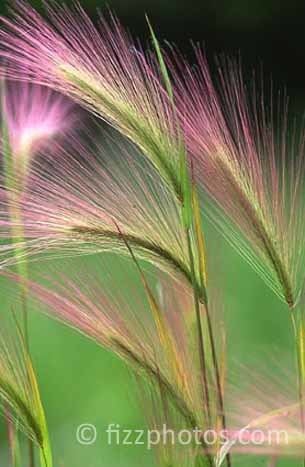Rank Species | Genus Hordeum Higher classification Hordeum | |
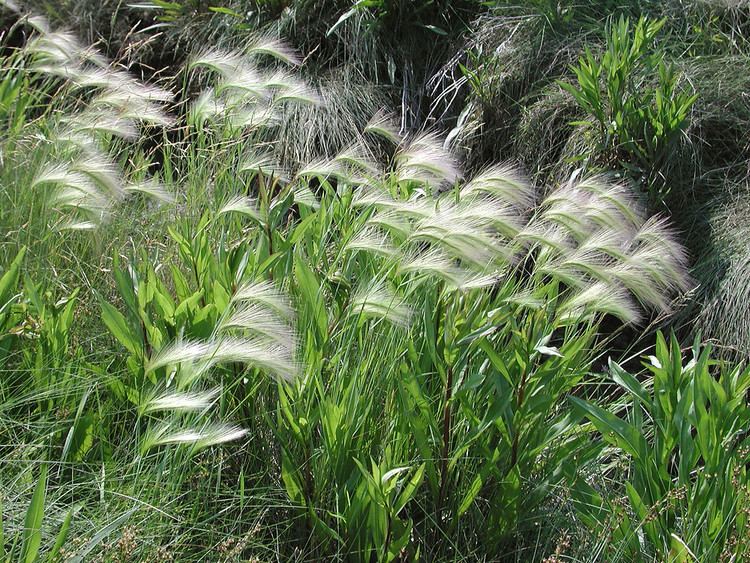 | ||
Similar Grasses, Hordeum, Hordeum murinum, Lagurus ovatus, Elymus | ||
Hordeum garden plants
Hordeum jubatum, with common names foxtail barley, bobtail barley, squirreltail barley, and intermediate barley, is a perennial plant species in the grass family Poaceae. It occurs wild mainly in northern North America and adjacent northeastern Siberia. However, as it escaped often from gardens it can be found worldwide in areas with temperate to warm climates, and is considered a weed in many countries. The species is a polyploid and originated via hybridization of an East Asian Hordeum species with a close but extinct relative of Californian H. brachyantherum. It is grown as an ornamental plant for its attractive inflorescences and when done flowering for its infructescence.
Contents
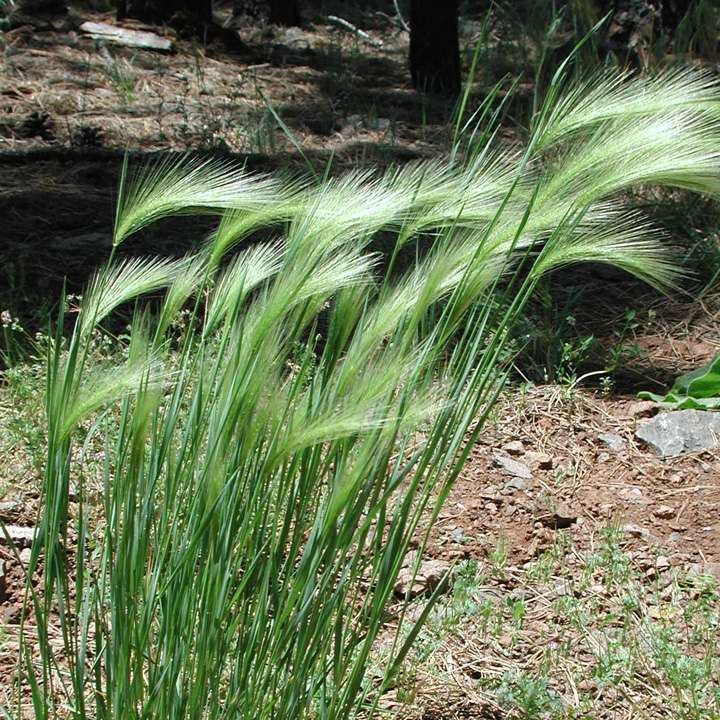
Hordeum jubatum
Properties

Foxtail barley (Hordeum jubatum) propagates by seed. It is known for its ability to tolerate saline soils but is capable of productive growth on soil types ranging from loamy to clayey soils with pH's of 6.4 to 9.5. The upper limit of soil NaCl for productive growth and development is 1.0%. Foxtail barley is also adapted to a wide range of moisture regimes from dry to wet. Although this species is generally found on moist sites, it can withstand drought-like conditions. It is commonly found in lowland areas with restricted soil drainage, disturbed sites, waste areas and fields. Foxtail barley is a pioneer species or invader in disturbed areas and in areas with high salinity. It is among the first grasses to establish after disturbance and rapidly invades areas exposed by a receding water table.
Seedling
Foxtail barley is a prolific seed producer, with each plant capable of producing upwards of 200 seeds. Seeds are elliptical, yellowish-brown and about a 0.25 inches (0.64 cm) long with four to eight awns. The seeds have sharp, backwards pointing barbs. Seed is dispersed by wind, machinery and animals and germinates in the cooler temperatures of the spring or fall. Seed germinating in the fall can overwinter and resume growth in early spring, giving Foxtail barley a competitive advantage over many crops. Germination is inhibited by warm temperatures and seeds require a period of darkness for germination to occur. Foxtail barley is a shallow-rooted plant with germination occurring at soil depths not greater than 3 inches (7.6 cm). The seedling of foxtail barley first appears as thin, vertical leaves covered in short, dense hairs. The leaves have prominent venation and rough margins, while auricles are absent or elemental and the membranous ligule is very short with fine hairs.
Juvenile/mature
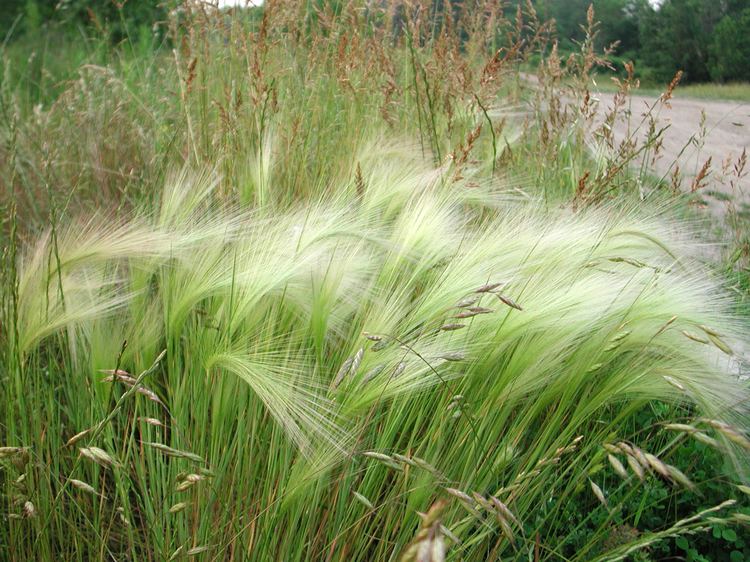
Foxtail barley is a fibrous-rooted, densely tufted grass that grows from 30–100 centimetres (12–39 in) tall and is erect or reclining at the base. The stems are erect and smooth and the leaf sheaths are split and hairy. The inflorescence of the mature plant is a dense, long-awned nodding spike with greenish or purplish colouring. The jointed rachis breaks into sharply pointed segments with three spikelets composing each segment. Only the central spikelet has one creamy coloured seed while each segment has seven awns with upward pointing barbs. These awns are up to 3 inches (7.6 cm) long and become easily attached to animals, clothing, machinery, etc. Leaf blades are slender and a greyish-green colour.
Ecological impact
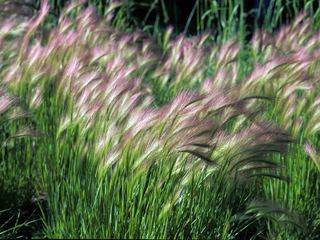
Foxtail barley is distinguished from cultivated barley (Hordeum vulgare L.) and Meadow barley (Hordeum brachyantherum) by lemma awn length. H. brachyantherum has awn lengths of 0.5 inches (1.3 cm); Foxtail barley has lengths of 0.5–3 inches (1.3–7.6 cm); and cultivated barley of 10–15 centimetres (3.9–5.9 in) in length. Once foxtail barley is established, it becomes extremely difficult to eradicate. Its extensive root systems and aggressive habit, as well as its ability to tolerate saline soils make it a resilient competitor. It is considered a weed because of this competitive ability and the dangers it poses to wildlife and livestock. While foxtail barley may be palatable for animals in early spring before it flowers, its seed heads, when dry, are very harmful to grazing animals. The awns with upward-pointing barbs become easily attached and embedded in the animal's mouth and face, causing severe irritation, abscesses, and even blindness. Foxtail barley is also host to a number of viruses, and because it harbours wheat rust and blackstem rust, can indirectly affect the development of field crops. Since foxtail barley accumulates high amounts of salt in its leaves and roots, it has the potential of reducing soil salinity. Given foxtail barley's ability to withstand saline soils, it has been identified as having potential for the revegetation of saline mine spoils to reduce erosion. It has also been recommended as a species suitable for wildlife habitat rehabilitation on disturbed lands, but given its other less desirable traits, other natural grass species would be more beneficial.
